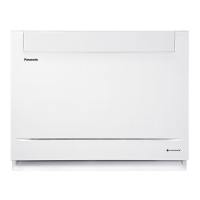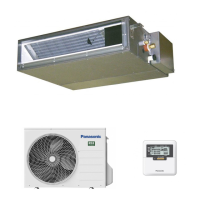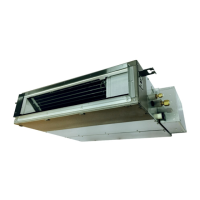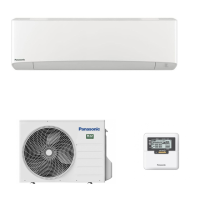13
English
7. Leak detection methods
The following leak detection
methods are deemed acceptable for
all refrigerant systems.
•
No leaks shall be detected when
using detection equipment with a
capability of 10
−6
Pa·m
3
/s or better,
for example, a helium sniffer.
•
Electronic leak detectors may
be used to detect fl ammable
refrigerants, but the sensitivity may
not be adequate, or may need re-
calibration.
(Detection equipment shall be
calibrated in a refrigerant-free
area.)
•
Ensure that the detector is not a
potential source of ignition and is
suitable for the refrigerant used.
•
Leak detection equipment shall
be set at a percentage of the
LFL of the refrigerant and shall
be calibrated to the refrigerant
employed and the appropriate
percentage of gas (25 % maximum)
is confi rmed.
•
Leak detection fl uids are suitable
for use with most refrigerants but
the use of detergents containing
chlorine shall be avoided as
the chlorine may react with the
refrigerant and corrode the copper
pipe-work.
•
If a leak is suspected, all naked
fl ames shall be removed/
extinguished.
•
If a leakage of refrigerant is found
which requires brazing, all of the
refrigerant shall be recovered from
the system, or isolated (by means
of shut off valves) in a part of the
system remote from the leak.
Oxygen free nitrogen (OFN) shall
then be purged through the system
both before and during the brazing
process.
OFN = oxygen free nitrogen,
type of inert gas.
8. Removal and evacuation
•
When breaking into the refrigerant
circuit to make repairs – or for
any other purpose – conventional
procedures shall be used. However,
it is important that best practice
is followed since fl ammability is
a consideration. The following
procedure shall be adhered to:
remove refrigerant -> purge the
circuit with inert gas -> evacuate ->
purge again with inert gas -> open
the circuit by cutting or brazing
•
The refrigerant charge shall be
recovered into the correct recovery
cylinders.
•
The system shall be “fl ushed” with
OFN to render the unit safe.
•
This process may need to be
repeated several times.
•
Compressed air or oxygen shall not
be used for this task.
•
Flushing shall be achieved by
breaking the vacuum in the system
with OFN and continuing to fi ll until
the working pressure is achieved,
then venting to atmosphere, and
fi nally pulling down to a vacuum.
•
This process shall be repeated until
no refrigerant is within the system.
•
When the fi nal OFN charge is used,
the system shall be vented down
to atmospheric pressure to enable
work to take place.
•
This operation is absolutely vital if
brazing operations on the pipe work
are to take place.
•
Ensure that the outlet for the
vacuum pump is not close to
any ignition sources and there is
ventilation available.
Safety precautions
ACXF55-19350.indb 13ACXF55-19350.indb 13 1/29/2018 8:30:01 AM1/29/2018 8:30:01 AM
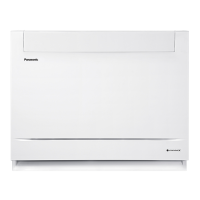
